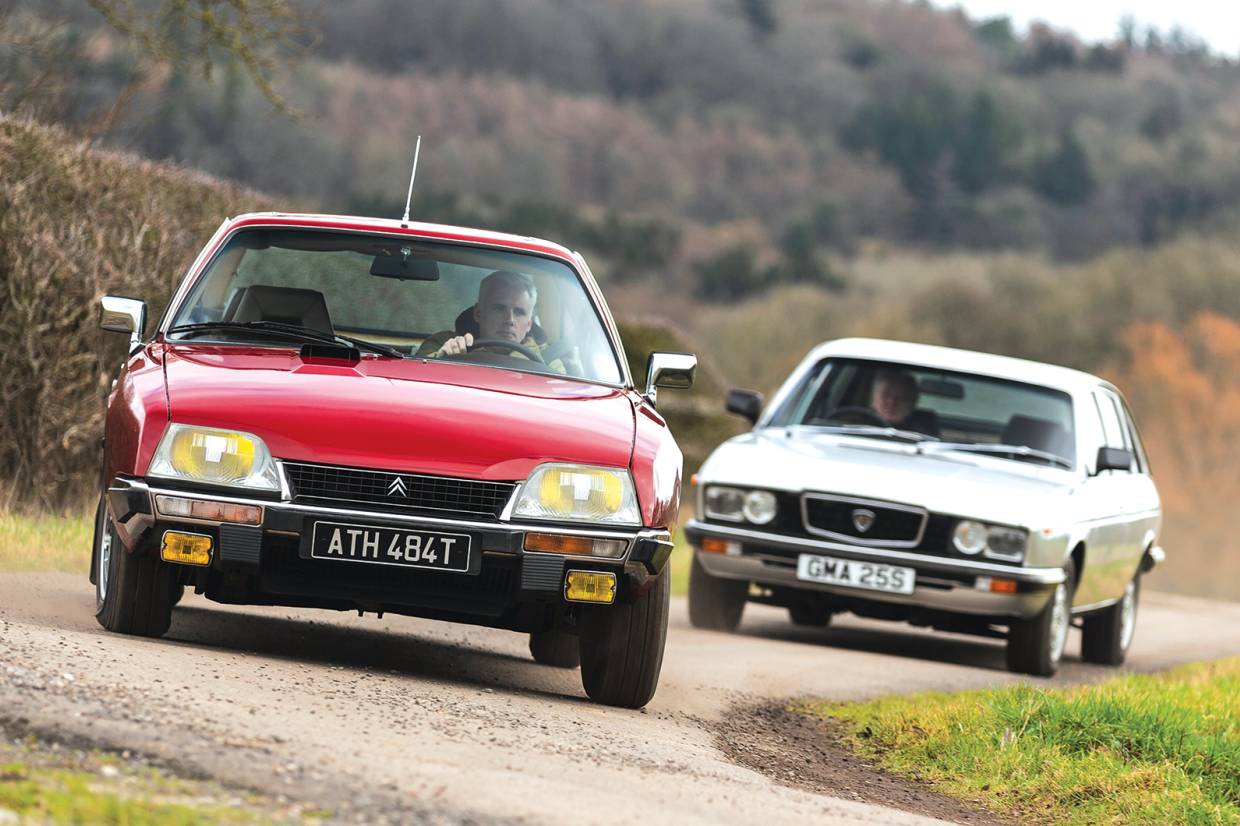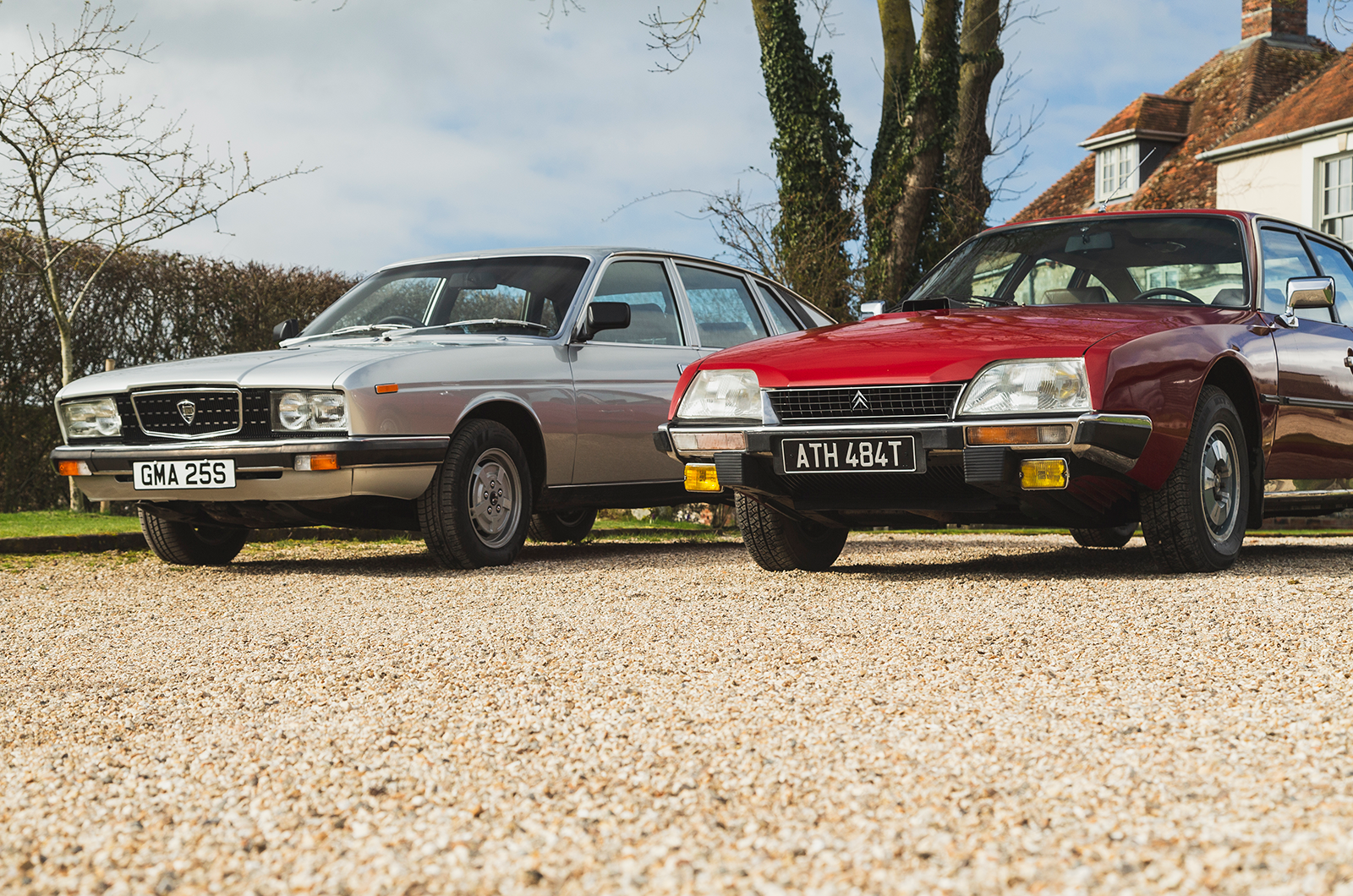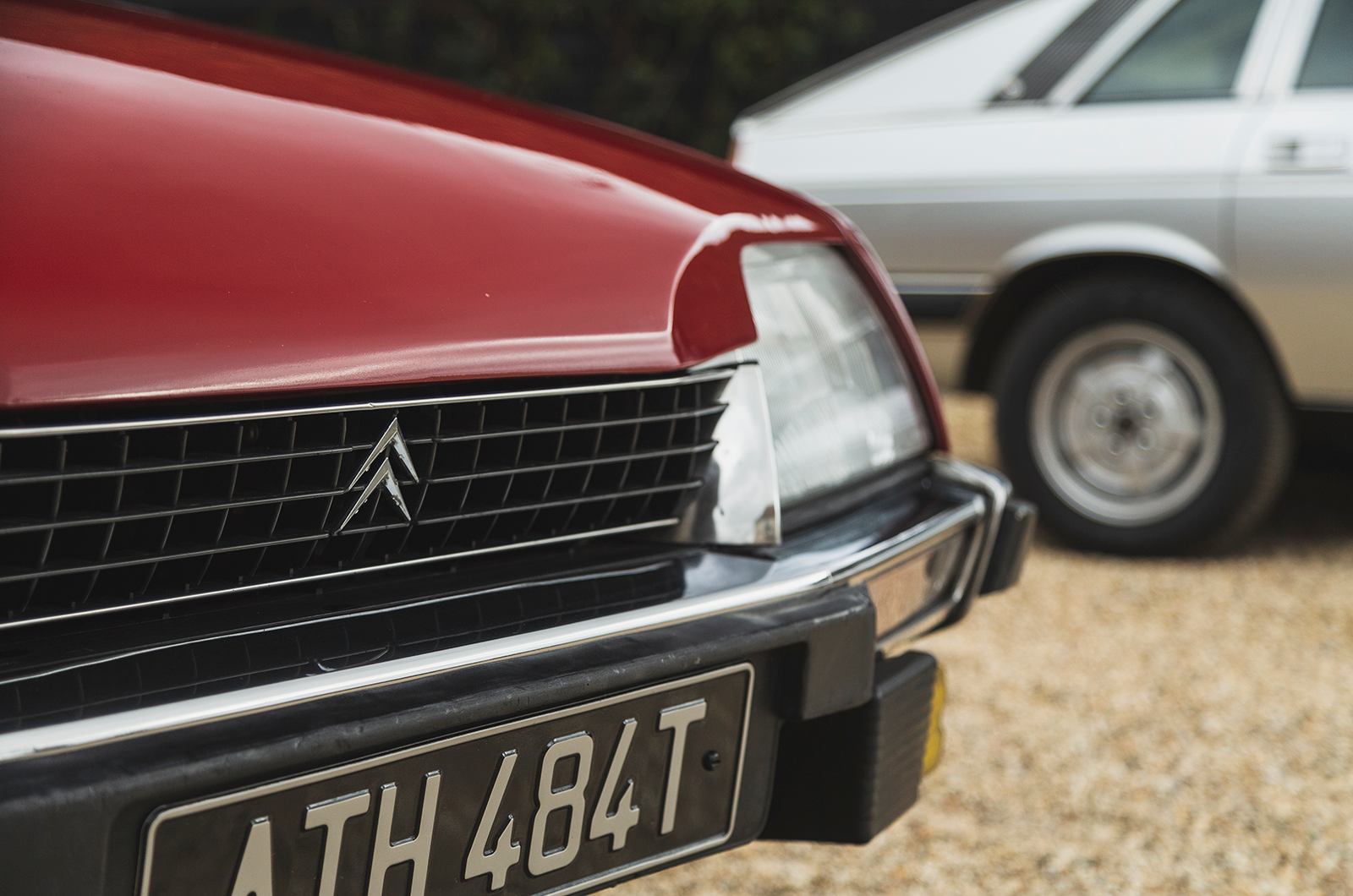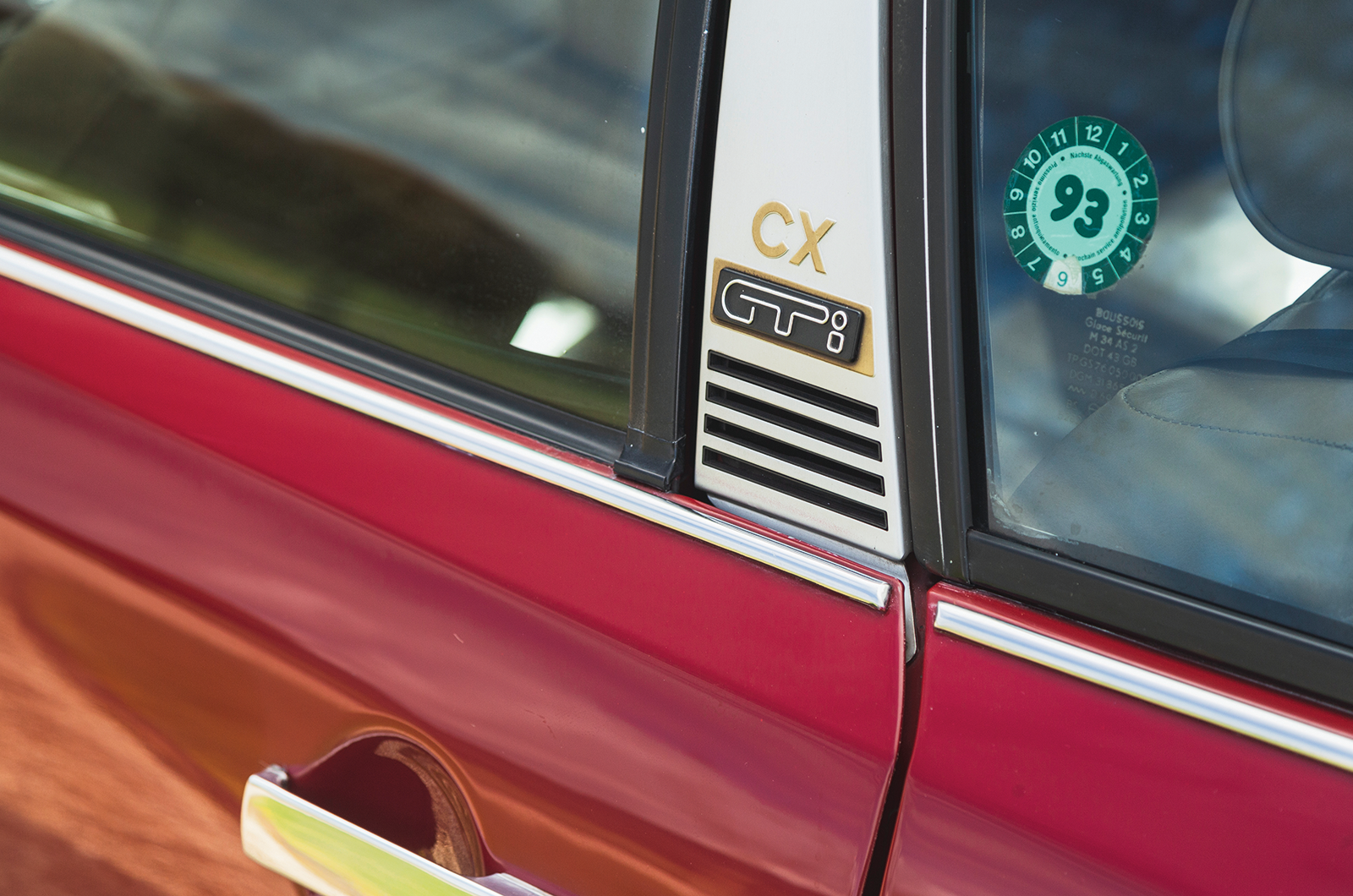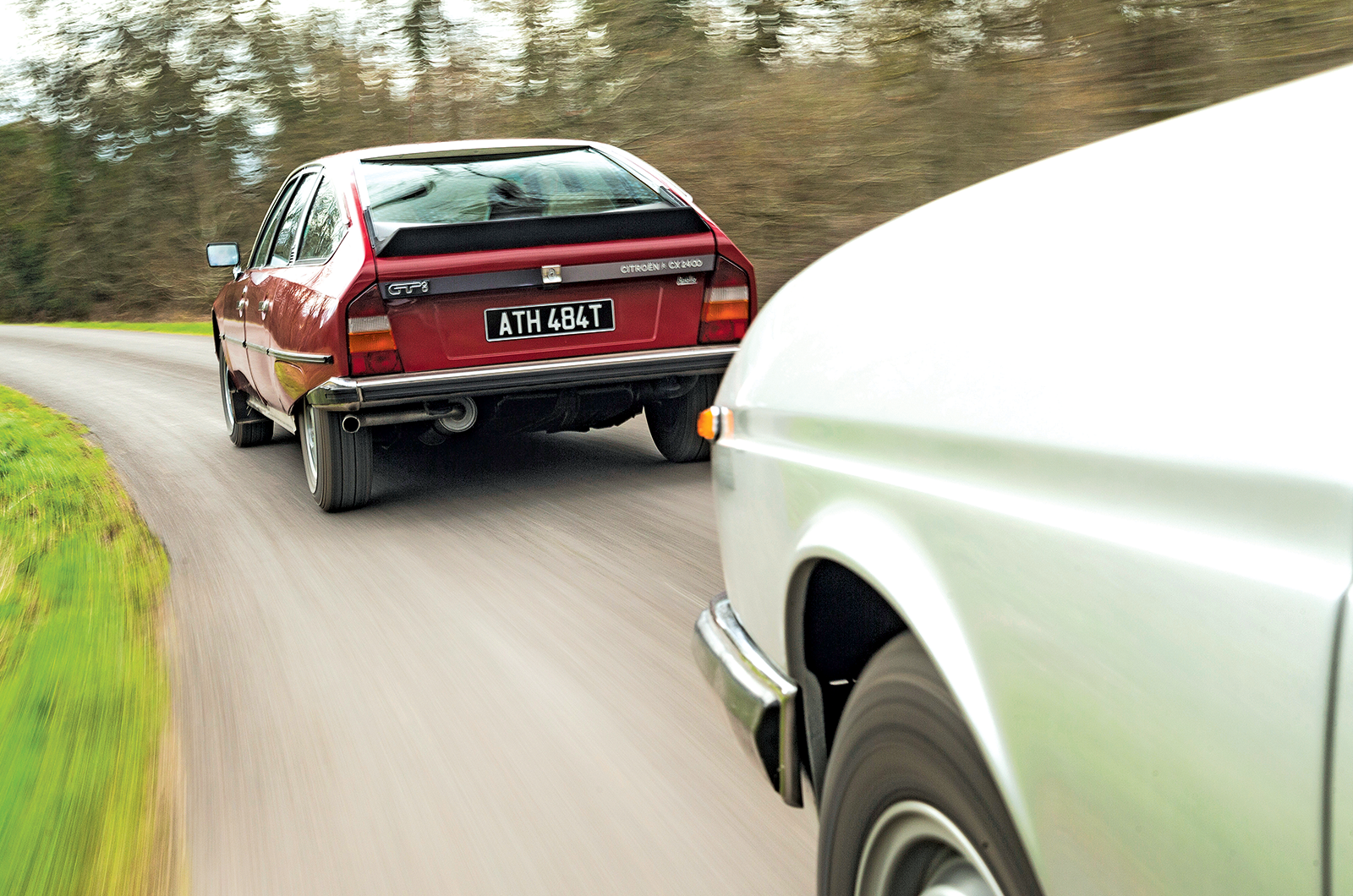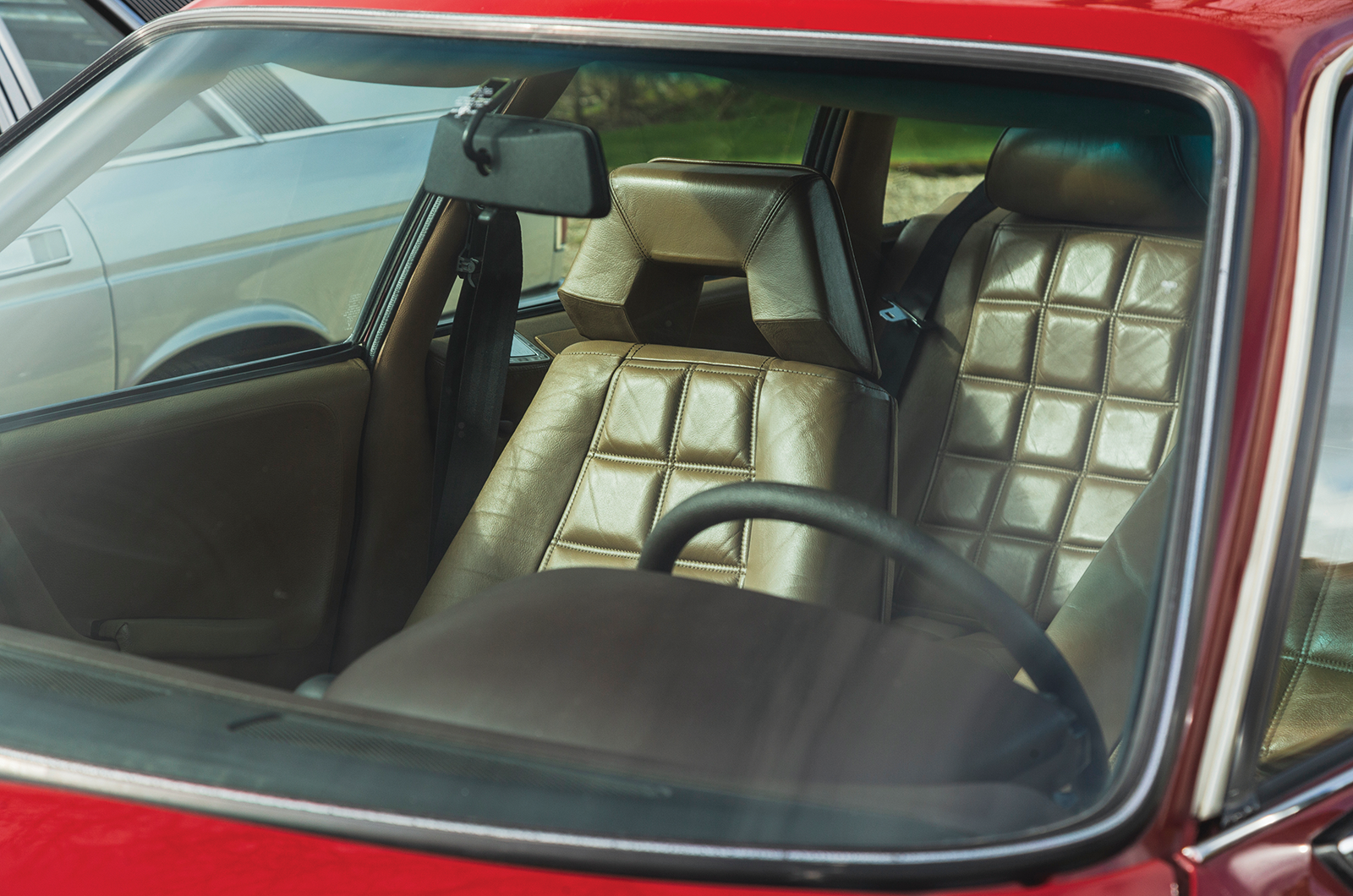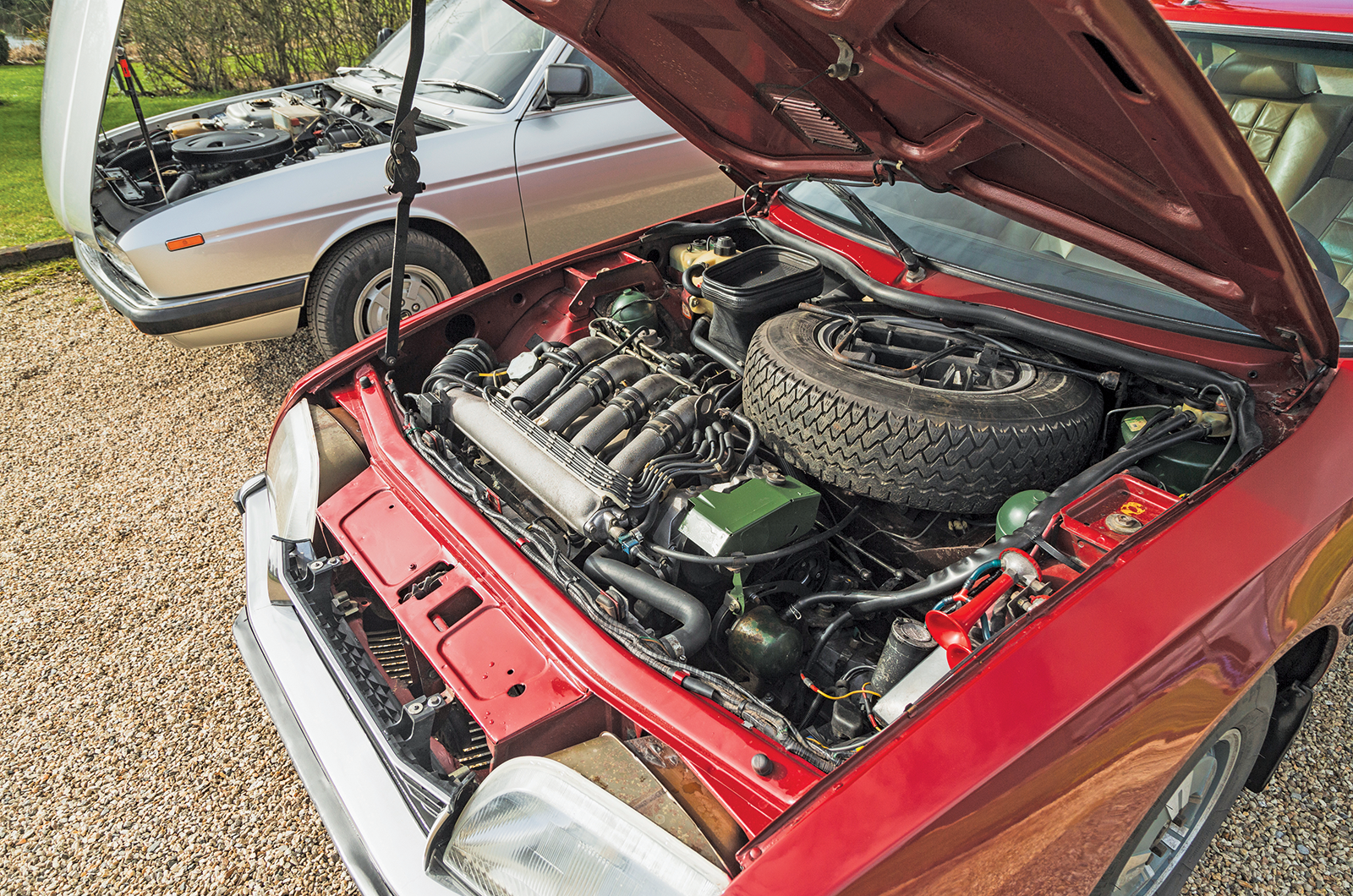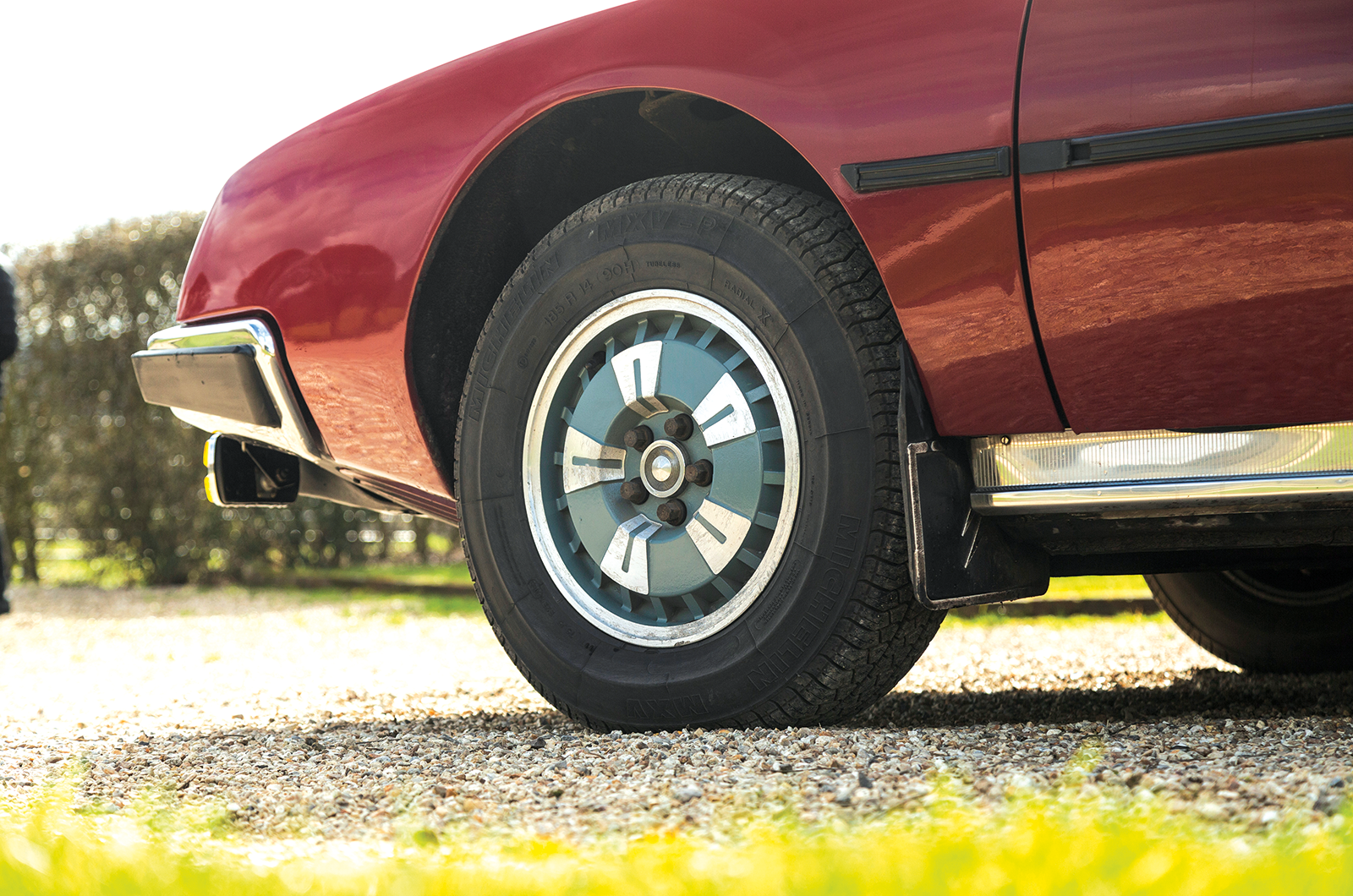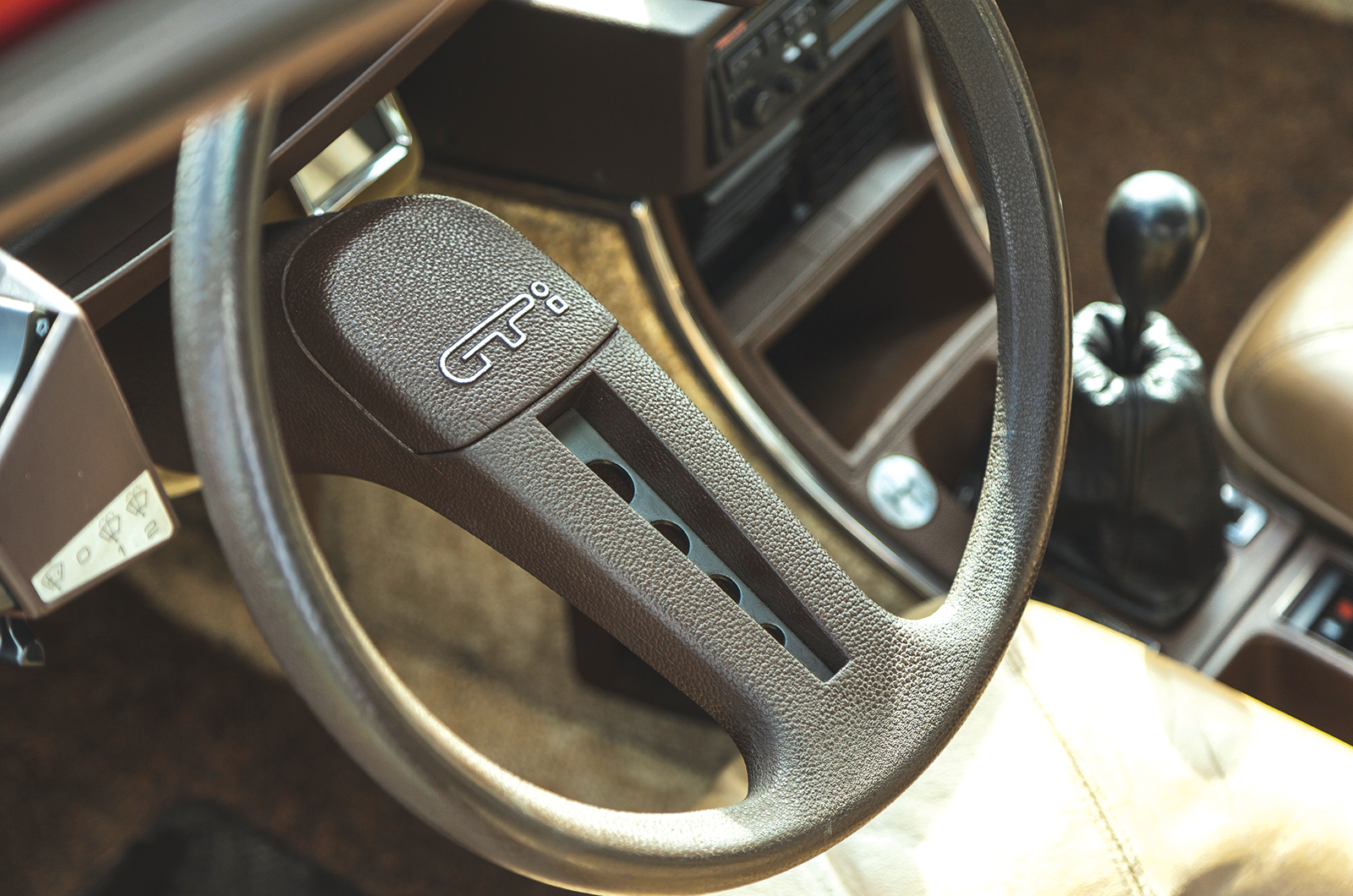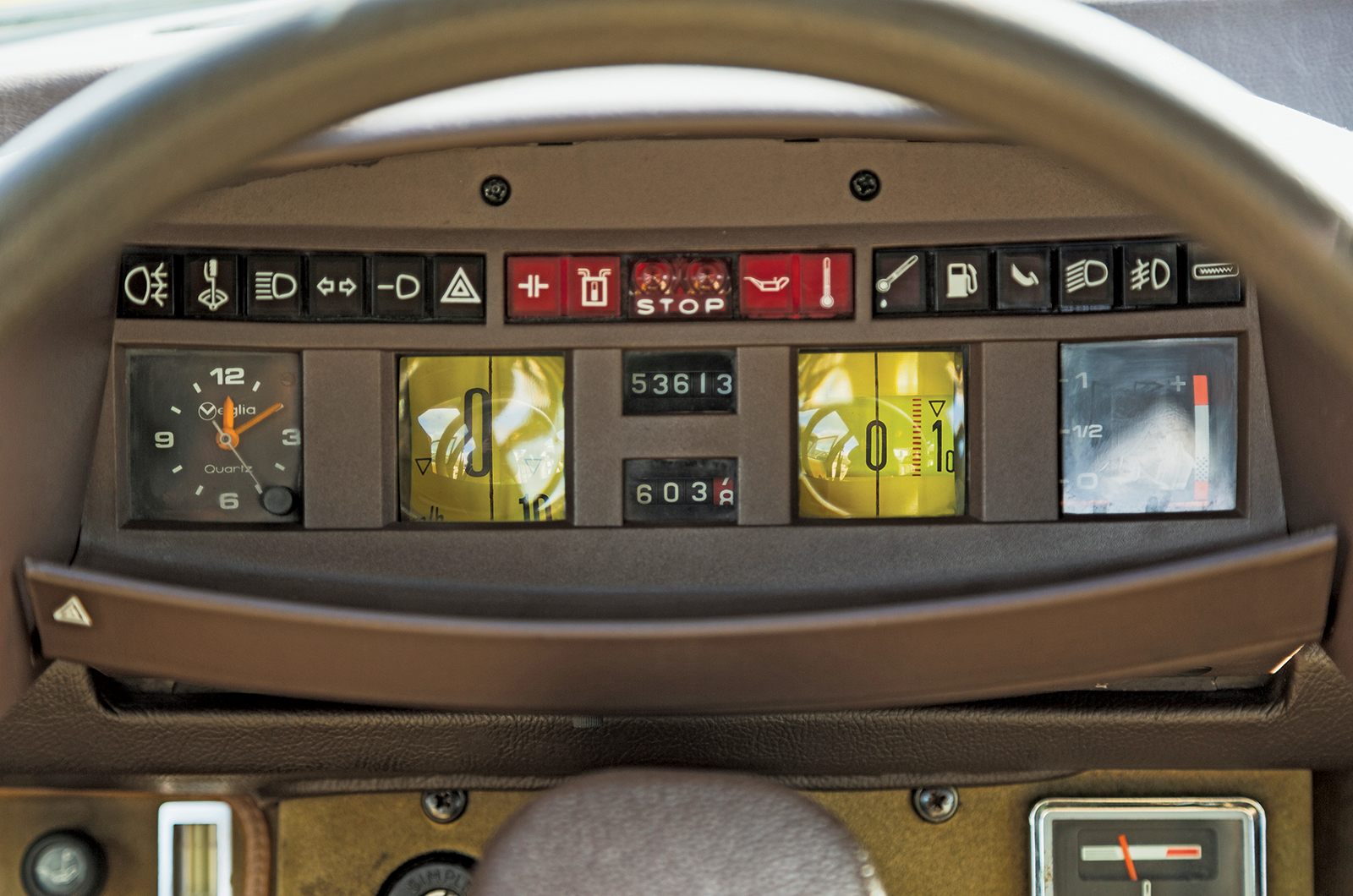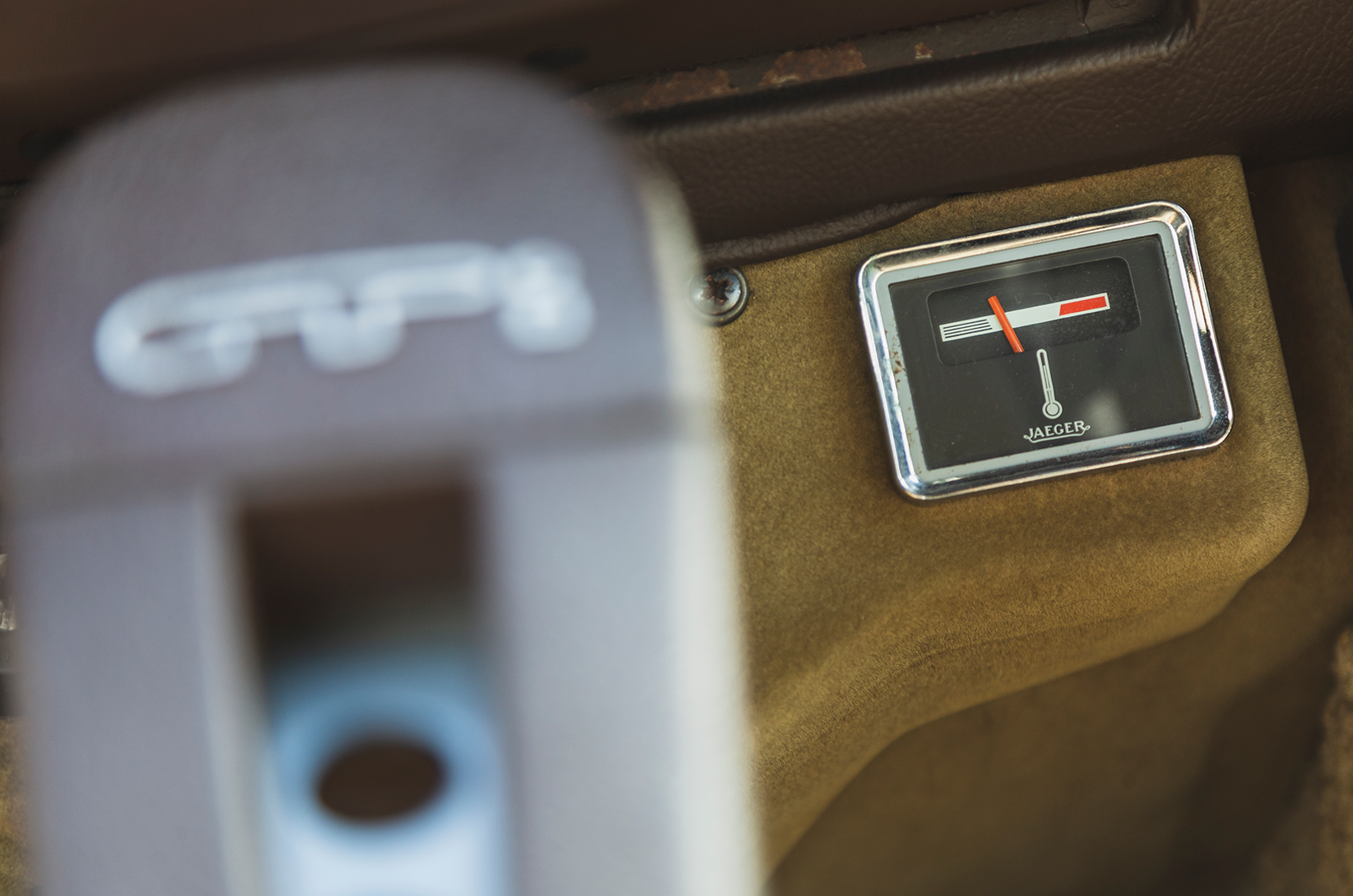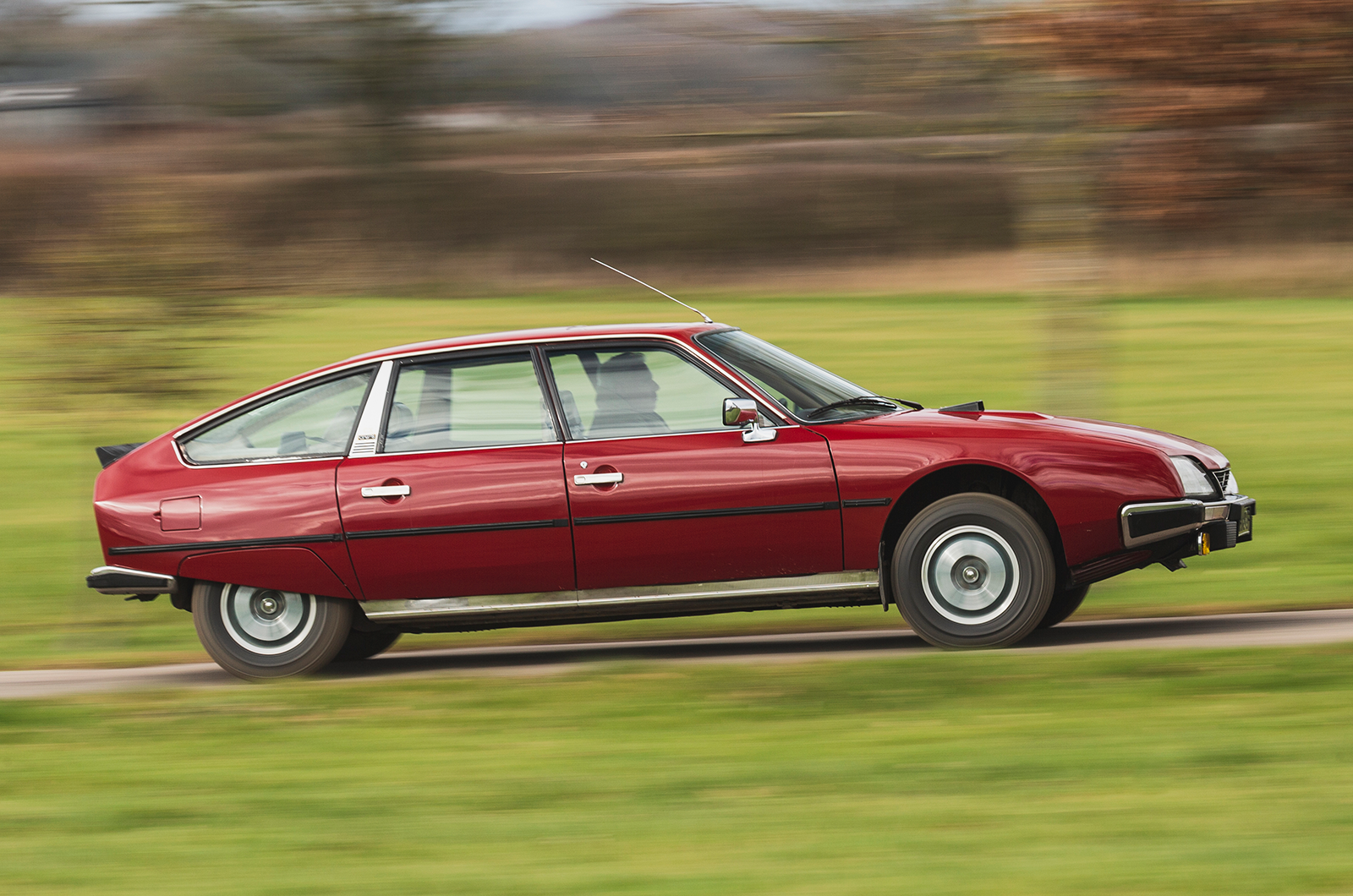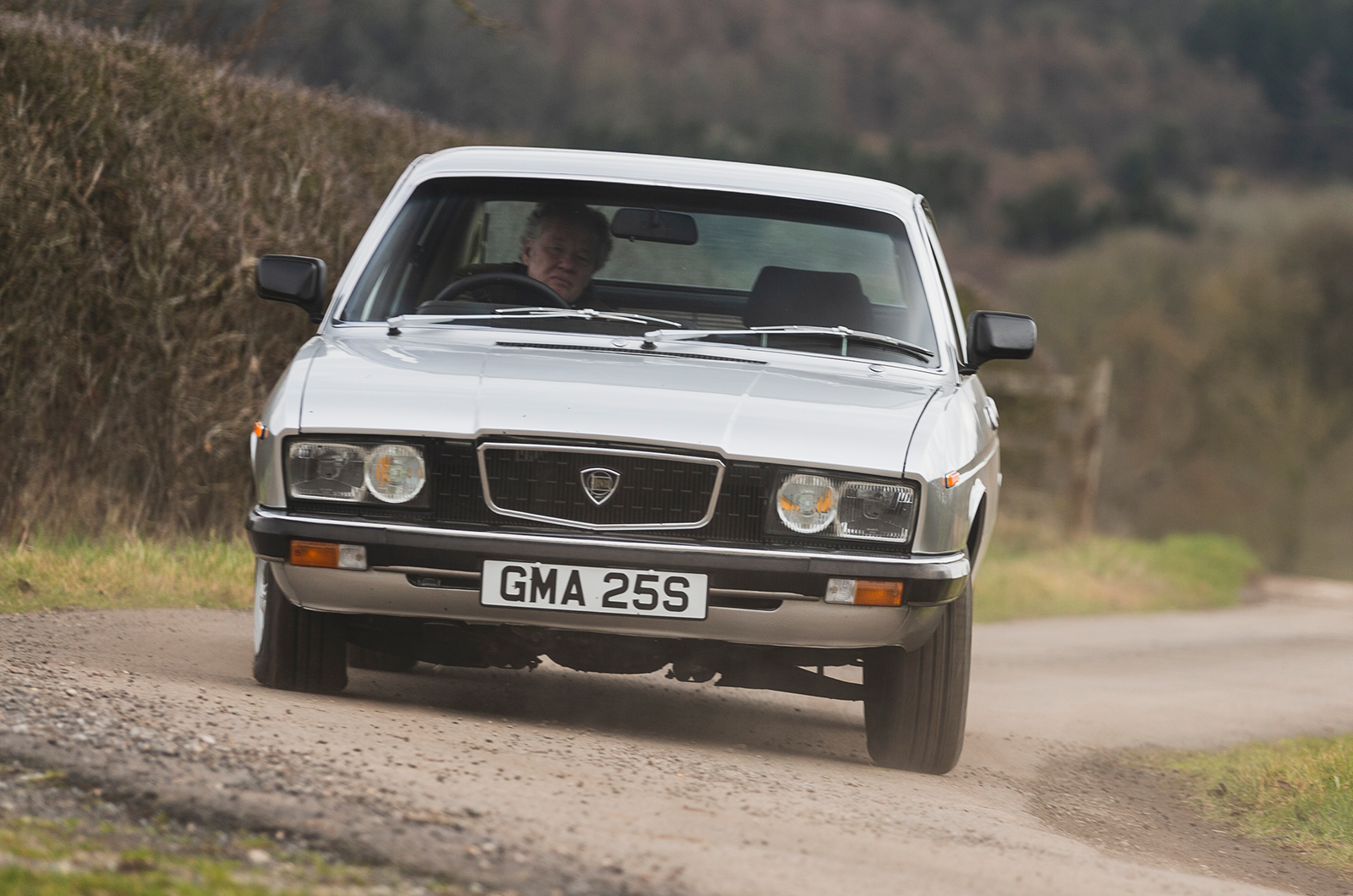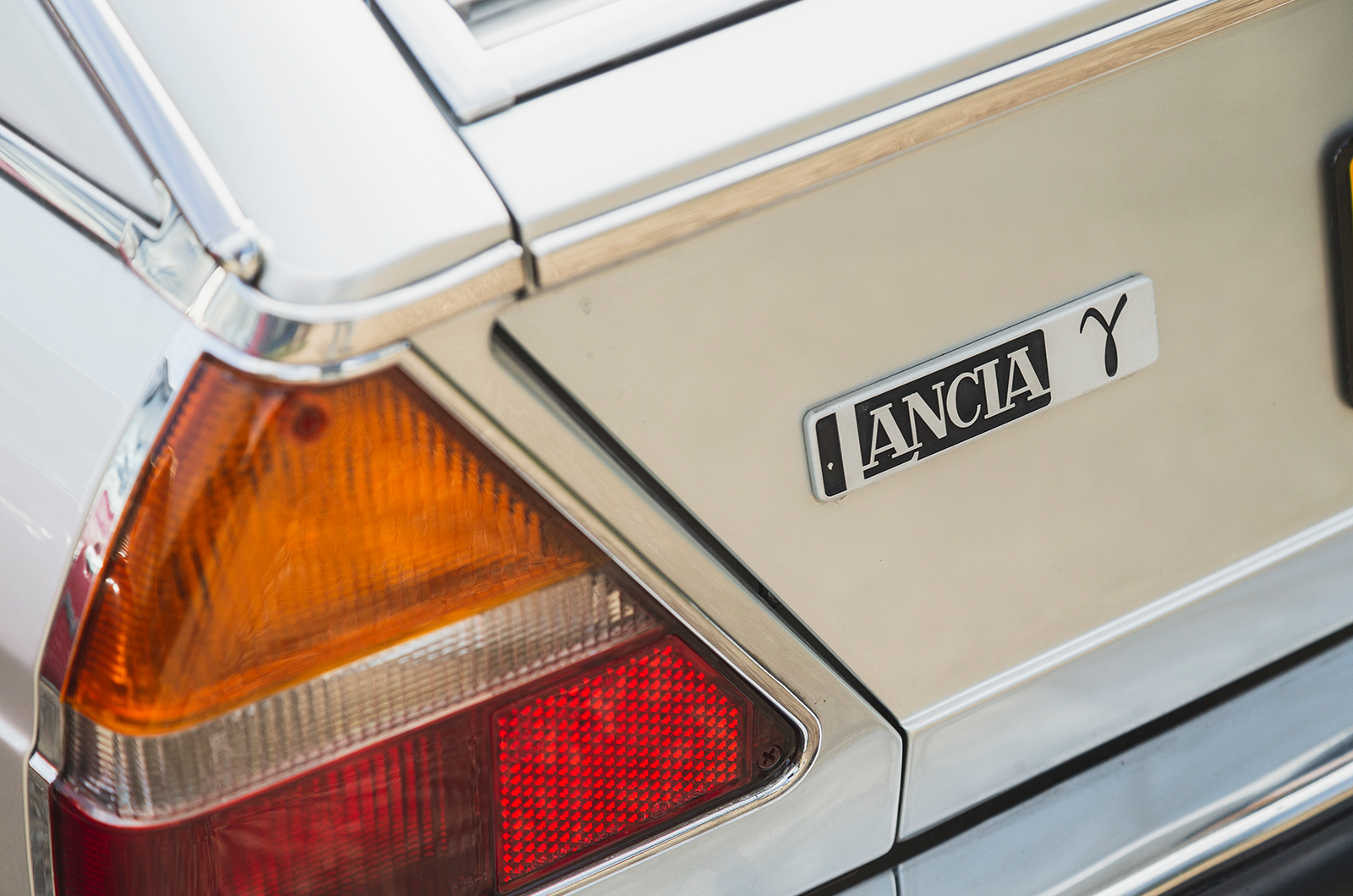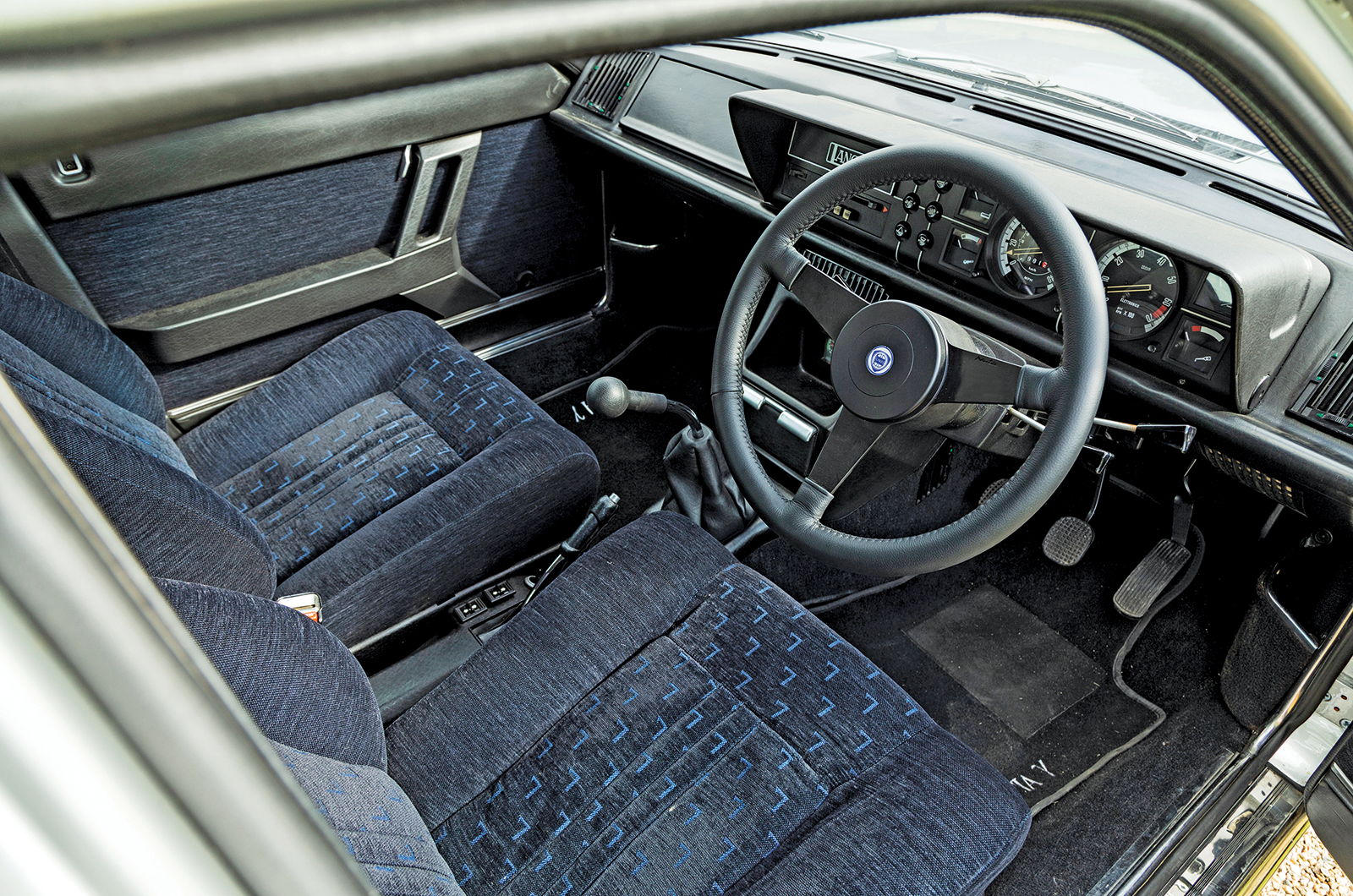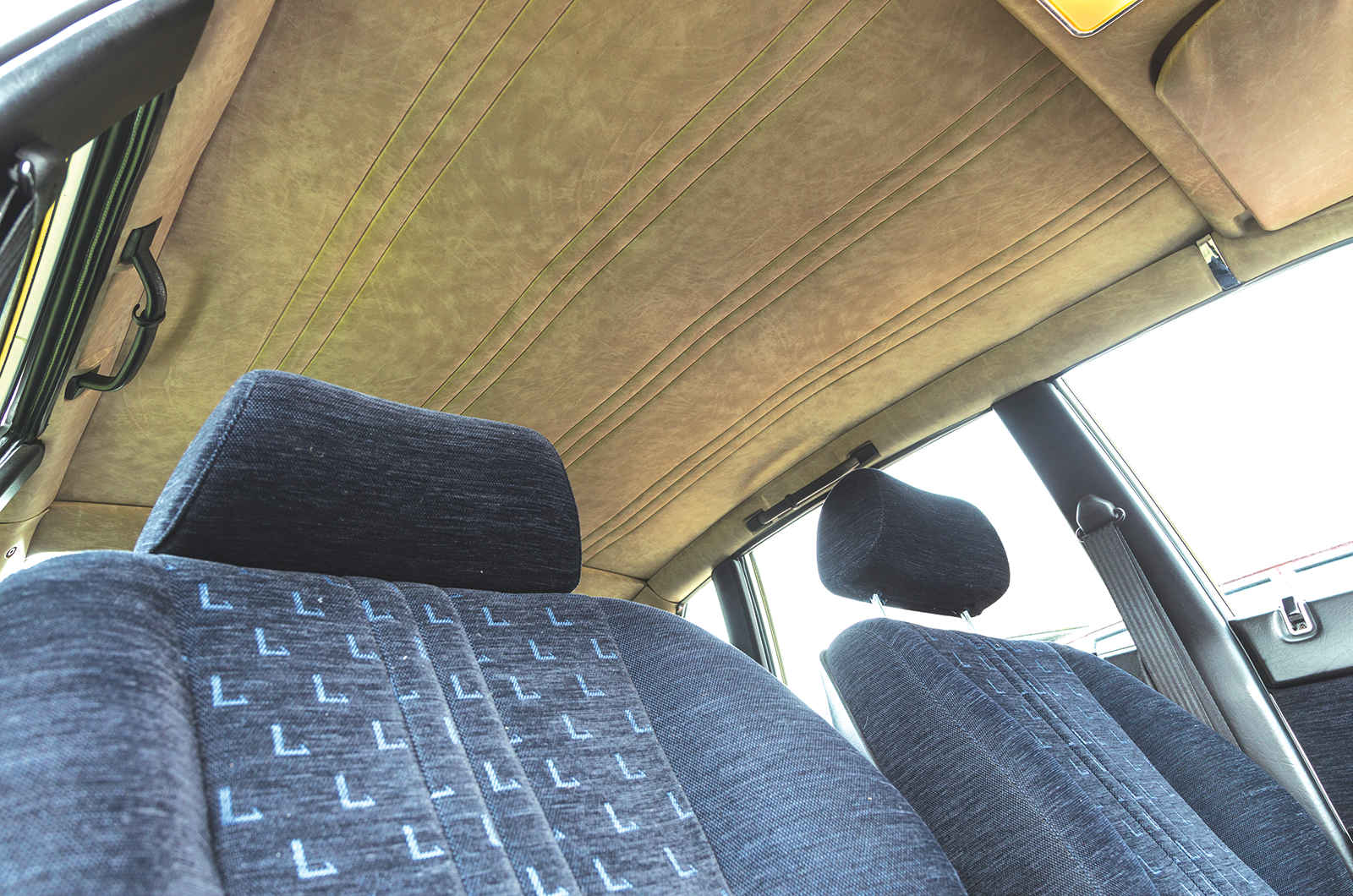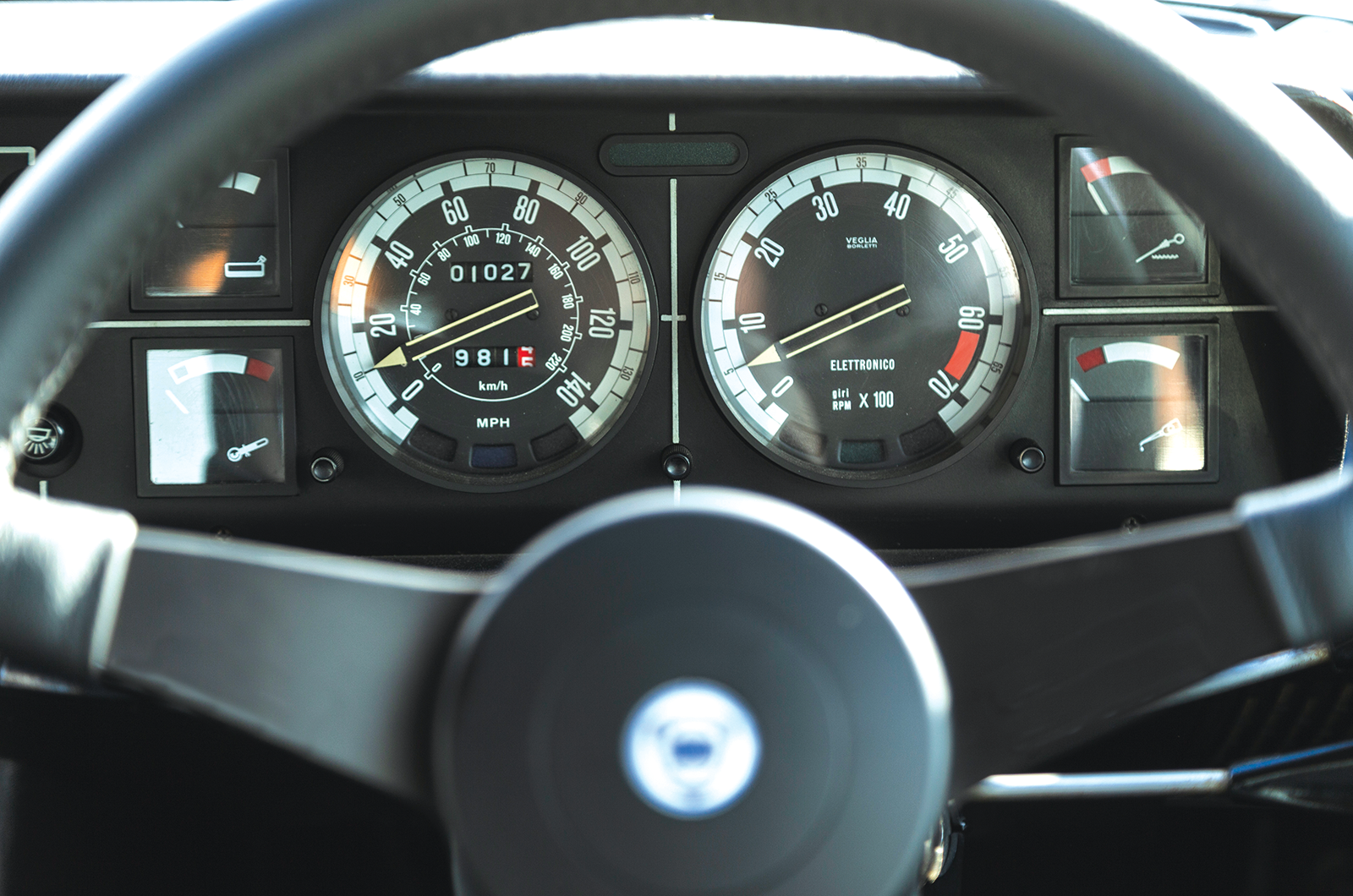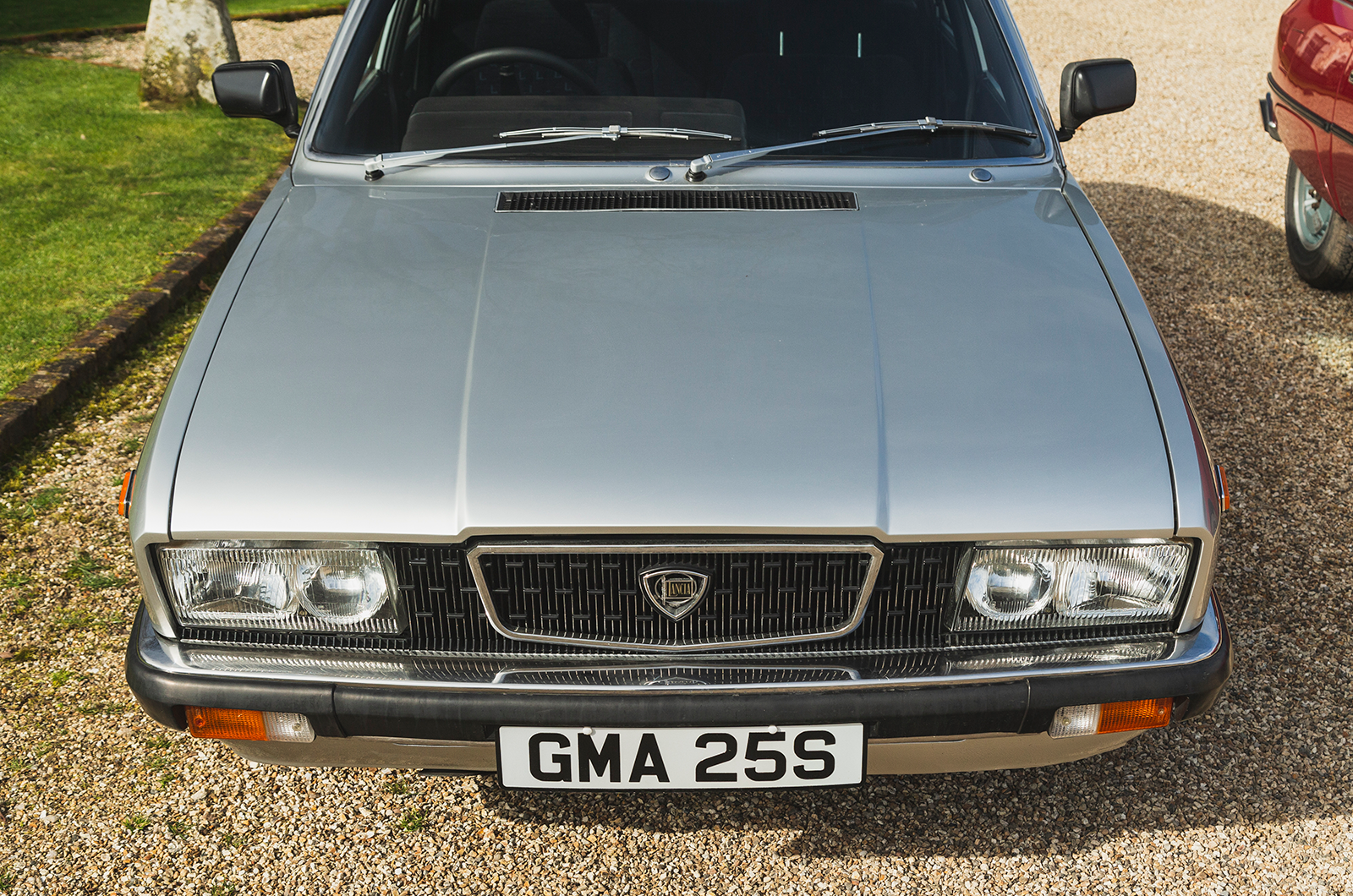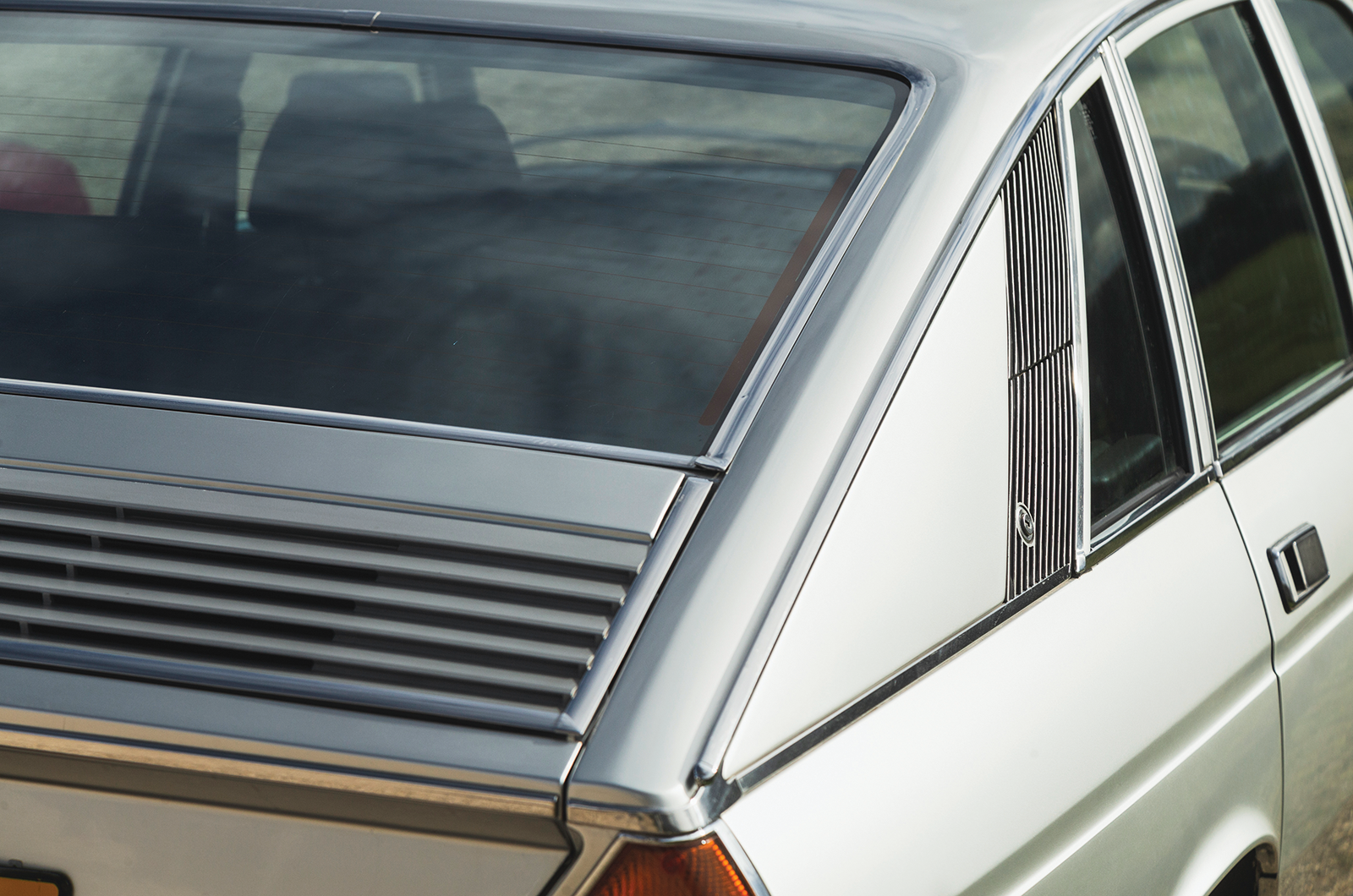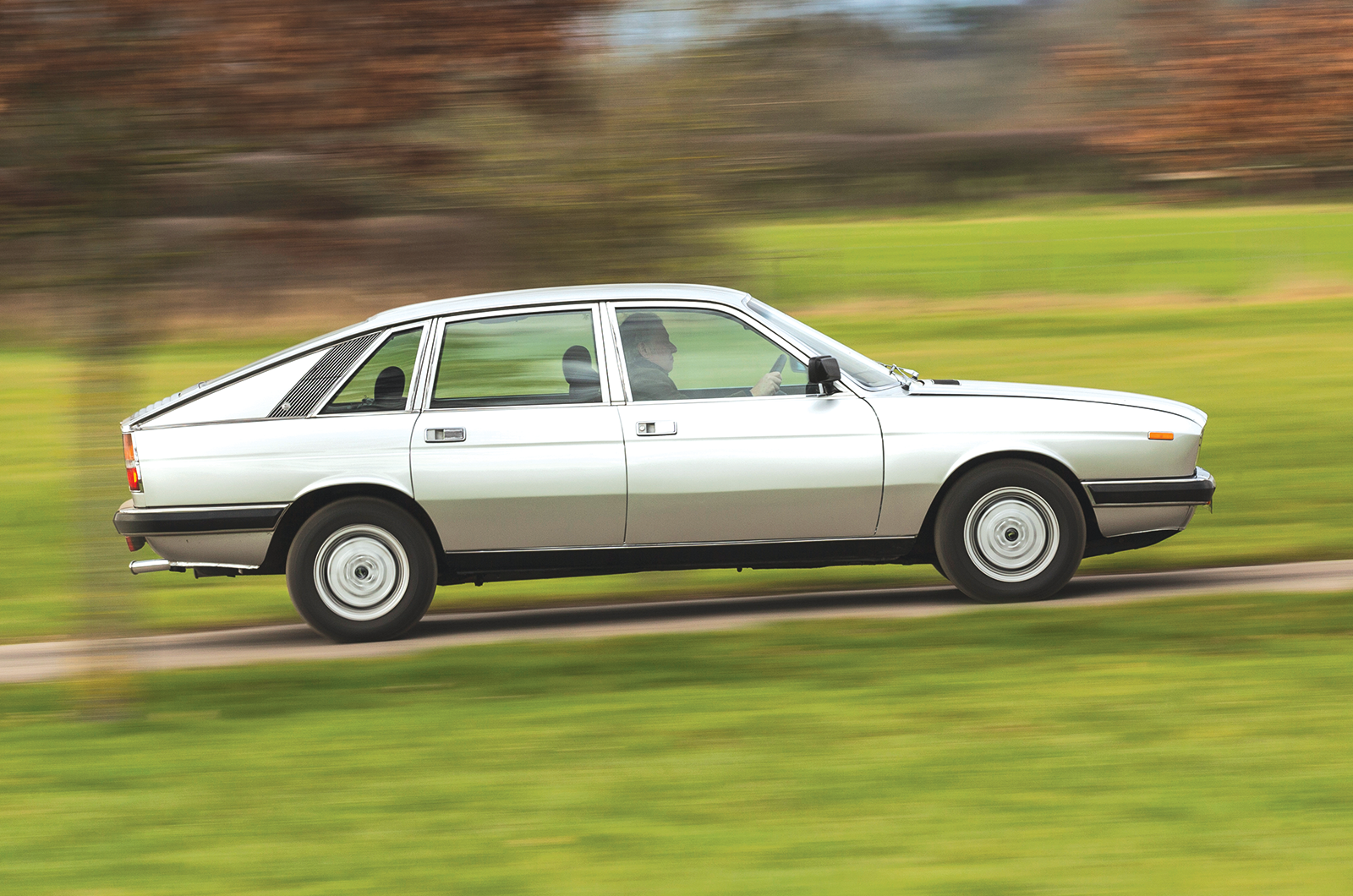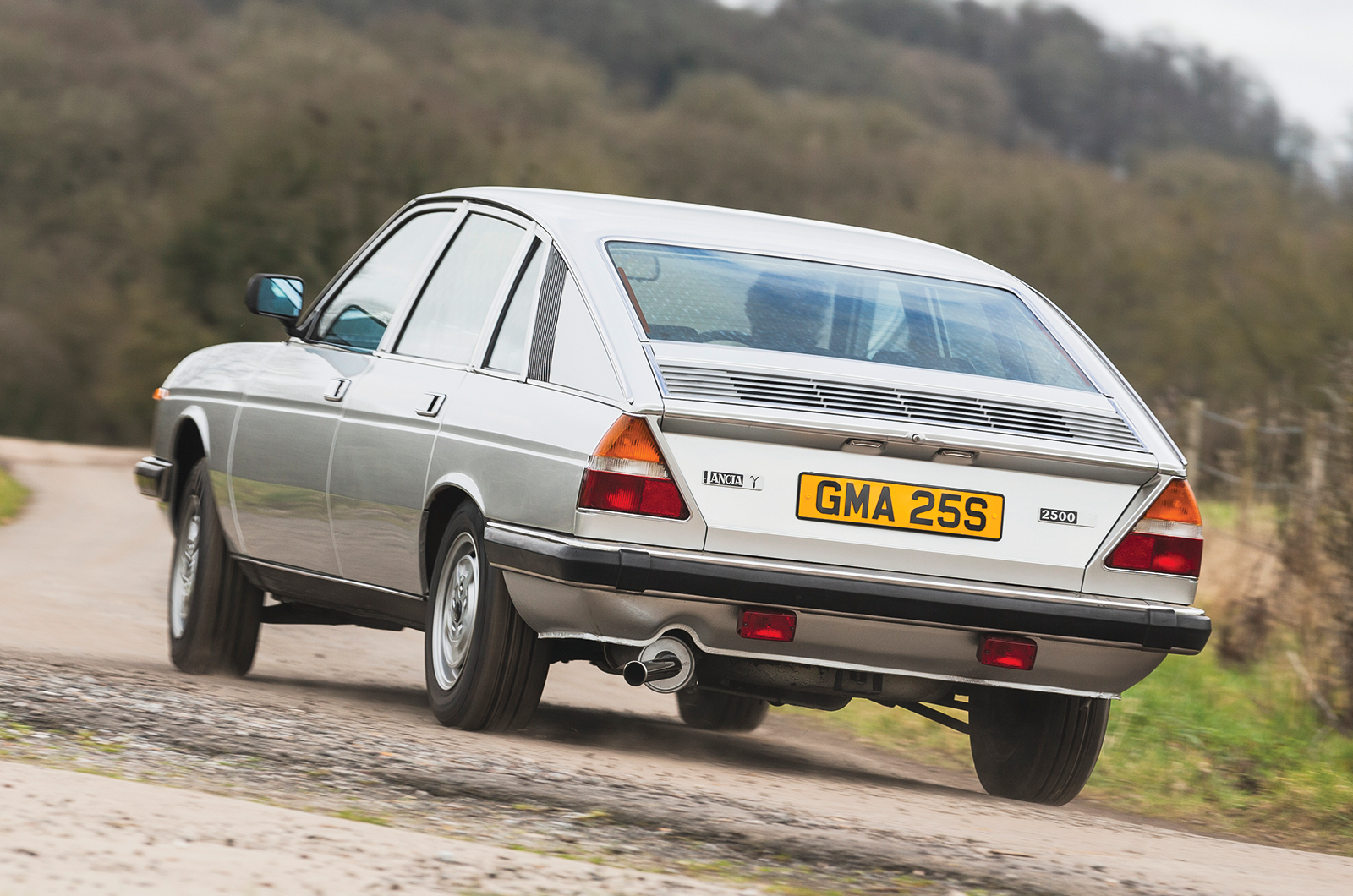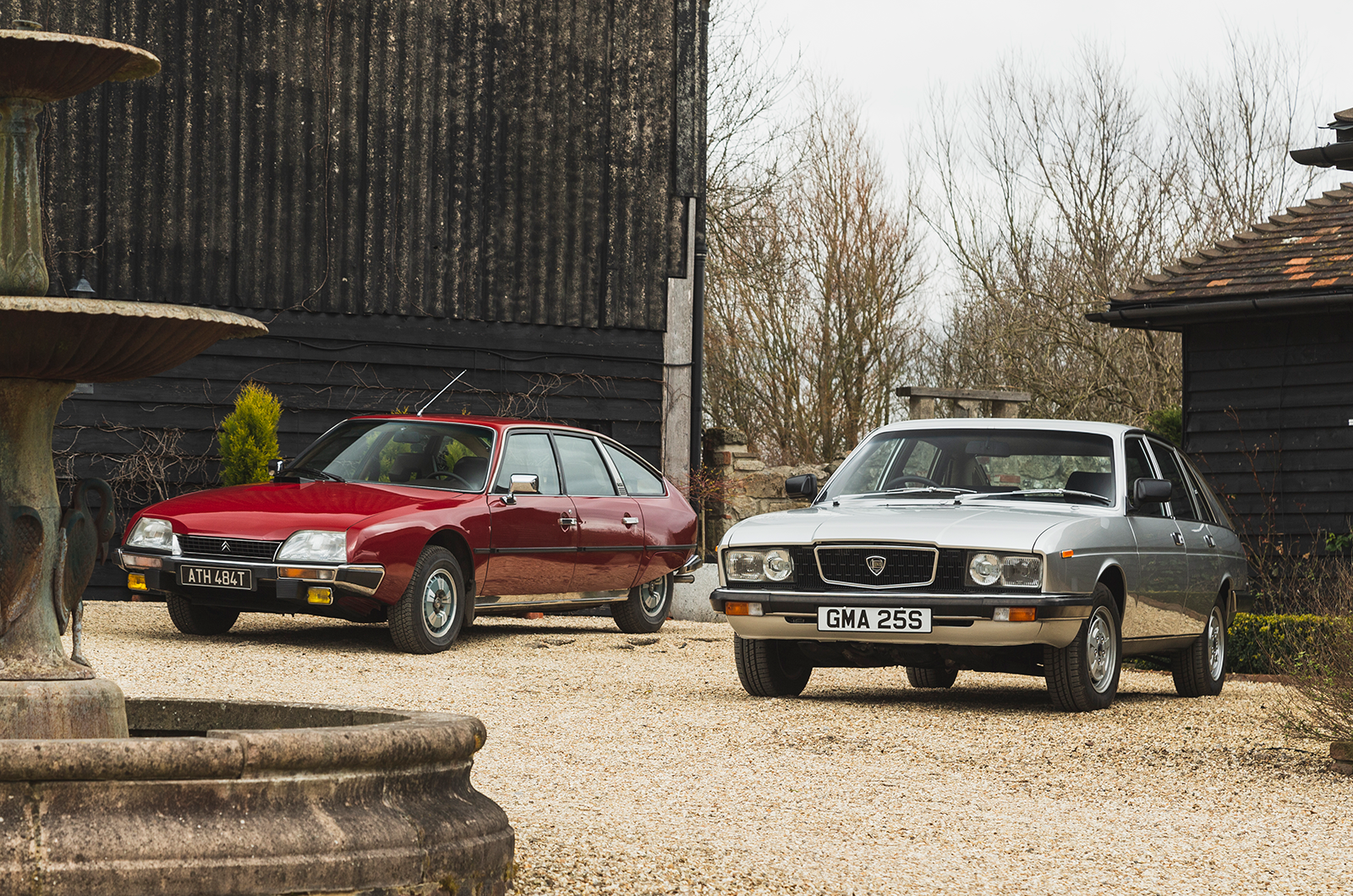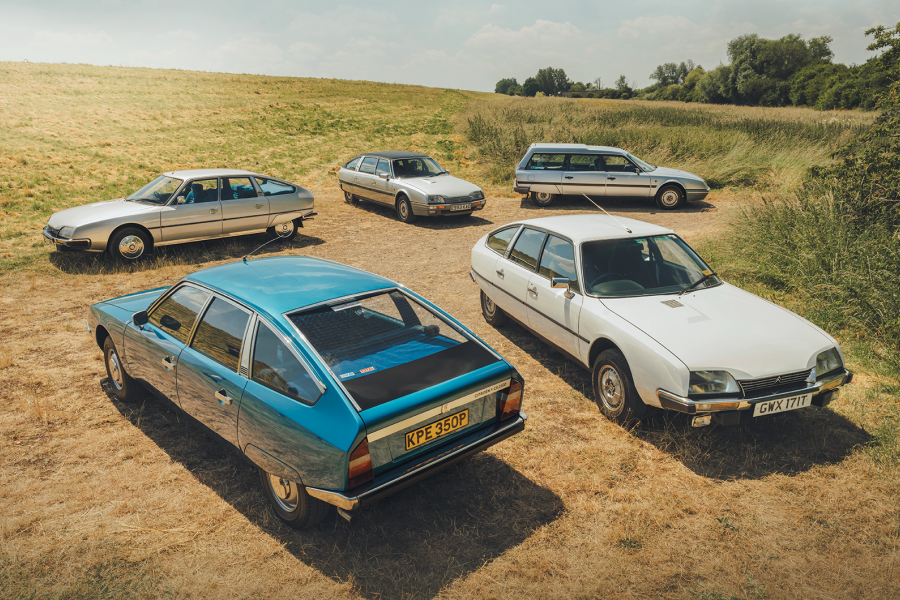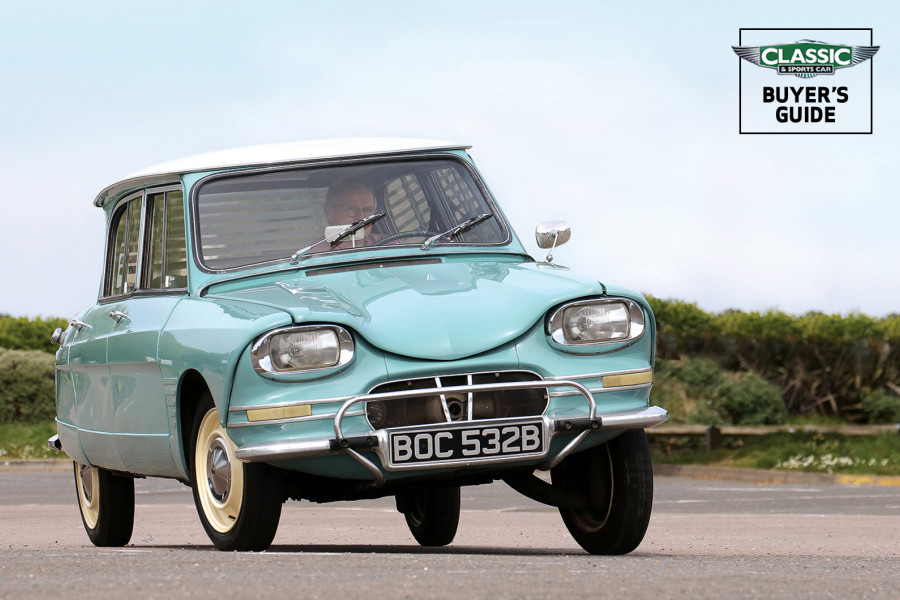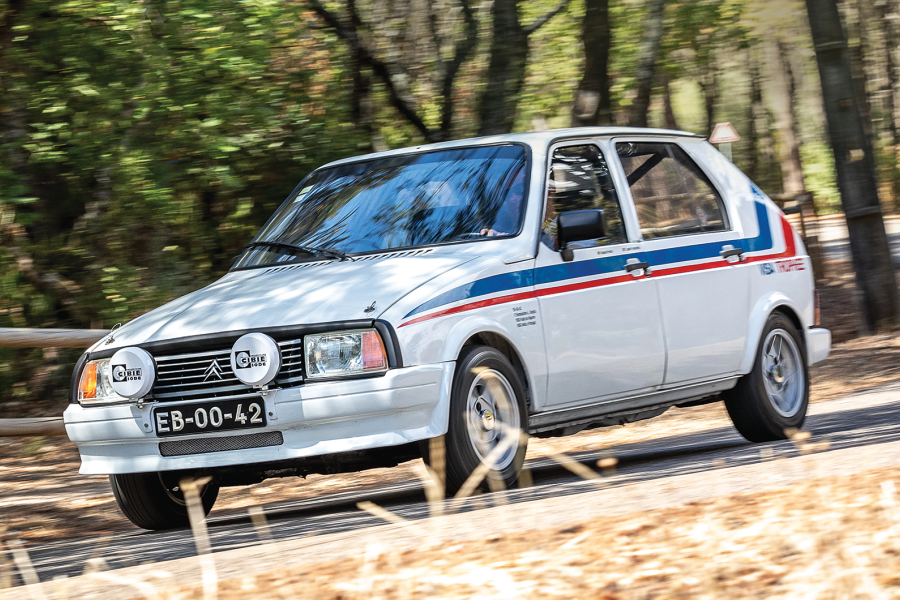With its long induction tracts, the CX’s Bosch-injected engine looks quite handsome under the bonnet compared to the Lancia’s flat-four, which is hidden under the giant pancake air cleaner of its big twin-choke Weber carburettor.
Quiet at tickover, Citroën’s pushrod motor is smooth and flexible on the road, while the narrowed ratios in the GTi gearbox provide a crisp edge to the acceleration.
On paper the cars are very evenly matched, but the Gamma leaves a greater impression of liveliness thanks to a torque curve that has almost peaked at 2000rpm and blends into a sharp uptake in acceleration when the last half of the throttle engages the secondary chokes.
Funky dials help to lift the Lancia Gamma Berlina’s otherwise drab interior
Where the French car tails off beyond 4000rpm, the Gamma remains strong well into three-figure speeds, and its high-rev silkiness never seems to run out of breath.
Ideally spaced gearing helps keep interest levels high, although the clutch is fairly heavy and the change itself lacks charm, being clunky when cold and rubbery even when warmed up.
If not exactly a jewel, the engine is both the Gamma’s Achilles’ heel and part of its intriguing personality.
The other is its steering – highly geared, accurate, lots of feel – and the overall composure on the road.
Incorporated into the Lancia's neat nose were side repeaters and self-levelling headlights
The lack of tyre squeal, a near absence of understeer and the modest amount of roll make it feel more like a giant Alfasud than an executive barge.
With its super-sharp brakes, linear rotating dials and that twitchy, high-geared, self-centring ‘DIRAVI’ steering, the CX requires acclimatisation to drive smoothly.
All of the controls ask for a light touch – brutal inputs result in lurching progress – and, while it is certainly capable of generating high levels of grip, the softly sprung, nose-heavy CX is not a prime candidate for being thrown around (even with beefed-up damping and anti-roll bars in GTi form).
Leonardo Fioravanti's fastback Gamma design bears a similarity to the CX, and both avoid full hatchback openings
It feels stable and planted in long, fast corners but slightly ponderous in tighter, slower ones where the Lancia nips through like something half the size.
The vague gearchange doesn’t help, but, once you are into top on a dual carriageway, the CX gets into its stride nicely with low levels of wind and road noise.
It is generally more refined than the Gamma, although at high speed the differences are less marked.
Like the CX, the Italian car is also very stable and its firm but acceptable low-speed ride smooths out to a level of comfort that can be compared with the Citroën, even if the Gamma falls well short of its sumptuously majestic deportment on almost any kind of surface.
The Lancia Gamma feels sportier than the softly sprung Citroën CX
A great ride was the least buyers expected from a new big Citroën for the 1970s and ’80s.
Perhaps the Gamma’s problem, apart from the fact that its parents appeared to adopt a ‘not invented here’ policy almost immediately, was that nobody seemed to know what was expected of a ’70s Lancia flagship.
Not quite a replacement for the more substantial Fiat 130, yet somehow not really a natural follow-up to the Flavia, the Gamma was a talented machine that displayed moments of brilliance.
It got some of the easy bits spectacularly wrong (I’m certain Citroën would never have signed off on a car with the dashboard wobbles and scuttle shake the Gamma suffered from), yet got tricky stuff, such as the handling, amazingly right.
The flat-four in the Lancia Gamma had a poor reliability record
Unlike the CX, the Lancia never quite evolved into a credible option in the big-car world.
A beautiful coupé variant added gloss to the car’s image, but not much profit; ditto the tax-busting Italian-market 2-litre model and the improved S2 versions from 1980 with fuel injection and optional automatic gearboxes.
If the Italians lacked the staying power or enthusiasm to sort the Gamma properly, the French, with so much riding on the success of the car, made sure the CX got the basics right.
Conversely, you get the feeling that the failure of the Gamma didn’t matter so much to Fiat.
‘On paper the cars are very evenly matched, but the Gamma leaves a greater impression of liveliness’
If anything, its problems strengthened the argument for the rationalised, totally Fiat-based Lancias of the future.
Great to drive but too often a nightmare to own, the fascinating but underdeveloped Gamma, as others have sagely observed, was an inspired design but a poor commercial product.
Images: Luc Lacey
Thanks to: Richard Carp of HC Classics for providing the Lancia
Factfiles
Citroën CX 2400 GTi
- Sold/number built 1977-’84/88,231
- Construction steel unitary
- Engine iron-block, alloy-head, ohv 2347cc ‘four’, Bosch fuel injection
- Max power 128bhp @ 4800rpm
- Max torque 145lb ft @ 3600rpm
- Transmission five-speed manual, FWD
- Suspension independent, at front by equal-length parallel transverse links rear trailing arms; hydropneumatic self-levelling springs, anti-roll bar f/r
- Steering variable-ratio power-assisted rack and pinion
- Brakes powered discs
- Length 15ft 3⁶⁄₈in (4666mm)
- Width 5ft 8⅛in (1730mm)
- Height 4ft 5½in (1359mm)
- Wheelbase 9ft 4in (2845mm)
- Weight 3031lb (1375kg)
- Mpg 20
- 0-60mph 10.1 secs
- Top speed 114mph
- Price new £6350
- Price now £10-12,000*
Lancia Gamma Berlina
- Sold/number built 1976-’83/14,554
- Construction steel unitary
- Engine all-alloy, sohc-per-bank 2484cc flat-four, twin-choke Weber carburettor
- Max power 140bhp @ 5400rpm
- Max torque 153lb ft @ 3000rpm
- Transmission five-speed manual, FWD
- Suspension independent, at front by MacPherson struts rear struts, twin lower transverse links, coil springs, telescopic dampers; anti-roll bar f/r
- Steering power-assisted rack and pinion
- Brakes discs, with servo
- Length 15ft ⅓in (4580mm)
- Width 5ft 8⅛in (1730mm)
- Height 4ft 7½in (1410mm)
- Wheelbase 8ft 9⅛in (2670mm)
- Weight 2910lb (1320kg)
- Mpg 19
- 0-60mph 9.6 secs
- Top speed 118mph
- Price new £7136
- Price now £8-10,000*
*Prices correct at date of original publication
Enjoy more of the world’s best classic car content every month when you subscribe to C&SC – get our latest deals here
READ MORE
Remembering Robert Opron
Luxury coupés: Mercedes 230CE vs Lotus Elite vs Lancia Gamma
Lancia Fulvia Sport vs Alfa Romeo Junior Zagato: premium blend
Martin Buckley
Senior Contributor, Classic & Sports Car
